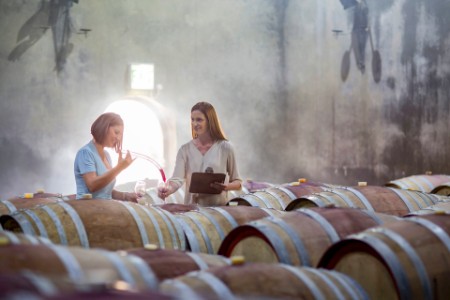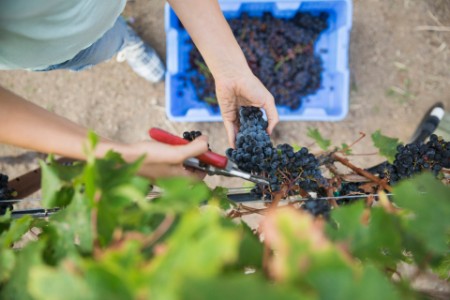
The better the question
In vino veritas?
Adulterated wine and fake labels cause headaches for the wine industry
People, of course, want to know that what they’re eating and drinking is what it claims to be, and that it comes from a reputable source, but adulterated wine, or fake labels on wine bottles, are major issues for the industry. In Italy alone wine sellers lose €2b of revenue because of it.
That’s why LaVis, one of the biggest wine producers in Italy has also become one of the first to sell blockchain-certified wine using EY Ops Chain.

The better the answer
Picking wine by the label
Data is captured from every stage of the wine-making process; smart labels tell the story
Blockchain is a method of recording data – a digital ledger of transactions, agreements and contracts. The technology is often associated with cryptocurrencies, but it can, and is, used for anything that needs to be independently recorded and verified as having happened. This allows for faster, cheaper collaboration, stronger information security and more reliable data.
EY Ops Chain is a set of applications and services designed to help organizations commercialize the use of blockchain technology across their enterprise.
Each of LaVis’ bottles now comes with a smart label – a unique QR code – that the buyer scans.
This label tells the ‘story’ of the wine. Not just the history of LaVis and their vineyards, but a full account of the wine’s DNA: when and where the grapes were harvested, how the wine was treated – for example the quality of the sulphites – the bottling date, lot number and more.
This information is based on data captured during each stage of the wine making process, using a mix of manual records and automated tools like drones and Internet of Things (IoT) technology, and recorded into a blockchain.
Furthermore each time the bottle moves – between producers, brokers, importers, wholesalers, distributors and retailers – the status of the bottle is also updated on the blockchain.
As Giuseppe says, “Blockchain in the wine industry means we can add a layer of transparency and traceability – captured in a decentralized, permanent, time-stamped record – to every stage of the bottle’s journey.”

The better the world works
A nice finish
Blockchain builds brands by meeting rising demand for authenticity and provenance
Our work with LaVis is about letting their customers see exactly what’s gone into the wine that they’re drinking, and connect more closely with the LaVis brand.
The benefits of blockchain, like added security and visibility, aren’t limited to the wine industry. We’re working with organizations from farmers to insurers, to help them meet growing demand for authenticity and accountability, and ultimately greater trust, in the products and services that people are buying.


